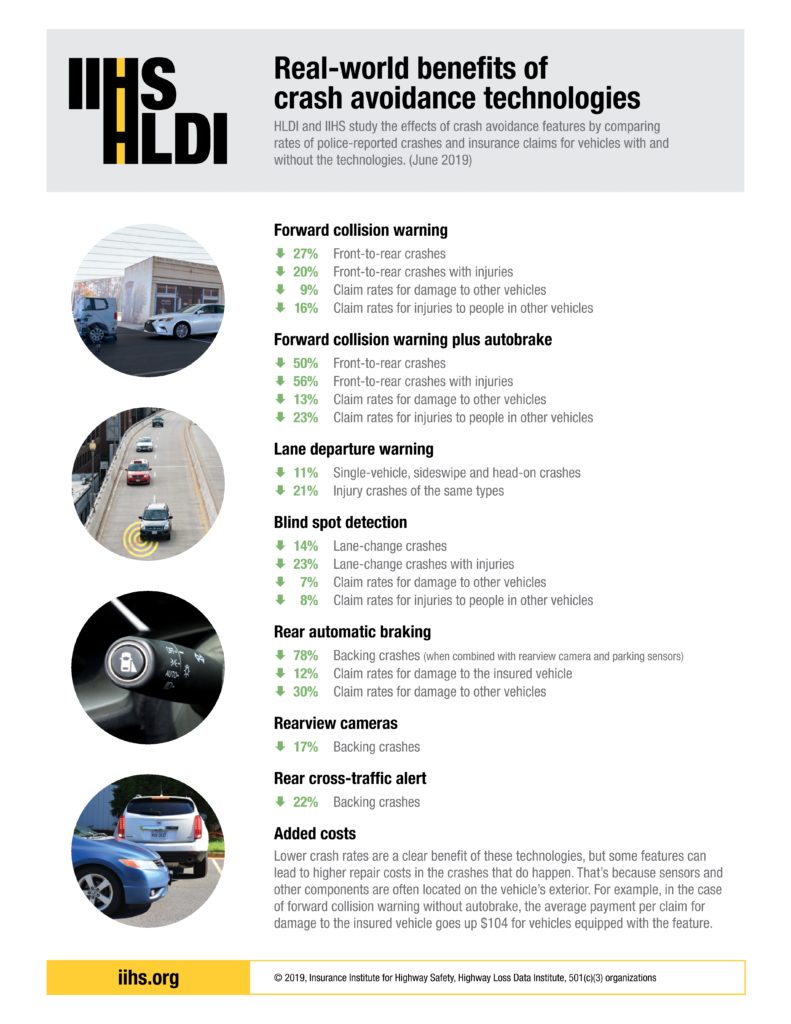
AAA: Level 2 ADAS averages ‘some type of issue every 8 miles’
By onAnnouncements | Associations | Market Trends | Technology
Advanced driver assistance systems are poised to reduce collision frequency and possibly even severity, but collision repairers can take some comfort in that the systems haven’t yet worked out all of their bugs.
AAA announced Thursday that 4,000 miles of testing found vehicles containing Level 2 active driving assistance technology “experienced some type of issue every 8 miles, on average.”
“Active driving assistance systems are designed to assist the driver and help make the roads safer, but the fact is, these systems are in the early stages of their development,” AAA director of automotive engineering and industry relations Greg Brannon said in a statement. “With the number of issues we experienced in testing, it is unclear how these systems enhance the driving experience in their current form. In the long run, a bad experience with current technology may set back public acceptance of more fully automated vehicles in the future.”
All the seemingly “autonomous” systems commercially available today are SAE Level 2: The car will steer, accelerate and brake itself, in what AAA calls an “active driving assistance” feature. However, the human is expected to monitor the road and take over if necessary. The driver might have to keep their hands on the wheel, or they might not.
At SAE Level 3, the driver doesn’t even have to watch the road, but they are expected to take over when the car requests help.
If either a Level 2 or Level 3 handoff is mismanaged then the consequences could be disastrous for everyone on the road, particularly in a Level 3 scenario where the driver wasn’t even watching the road. According to AAA, this transition could be problematic on the test vehicles.
“For all evaluated vehicles, test drivers sometimes found that ADA system status was unclear and/or were taken by surprise with sudden/unexpected disengagements,” the AAA study stated.
AAA tested a 2019 BMW X7, 2019 Cadillac CT6, 2019 Ford Edge, 2020 Kia Telluride and 2020 Subaru Outback on both real-world roads and/or a track. (AAA noted that the Cadillac Super Cruise is only allowed to engage on certain highways, and AAA couldn’t get the Edge’s Co-Pilot360 to activate on the track.)
Real-world problems overwhelmingly “involved instances of lane departure or erratic lane position,” which accounted for 73 percent of the errors, according to AAA. This would seem to jive with research that find consumers dislike lane-keeping tech, even if it on the whole seems to successfully prevent crashes.
The vehicles did well with lane-keeping and -centering on the track, according to AAA. However, the closed-course tests saw the BMW, Kia and Subaru striking a mock disabled vehicle on the side of the road.
“While AAA’s closed-course testing found that the systems performed mostly as expected, they were particularly challenged when approaching a simulated disabled vehicle,” AAA wrote. “When encountering this test scenario, in aggregate, a collision occurred 66% of the time and the average impact speed was 25 mph.” (Though it’s worth noting that the Subaru Outback only hit the fake car one out of three times and at least managed to cut 15.6 mph of speed before the impact.)
The fake vehicle (a DRP Soft Car 360), was positioned so its center line roughly fell above the lane line, with the entire driver’s side of the vehicle sticking out into the road and the passenger’s side on the roadside. AAA felt such a jutting test car “could be considered a best-case scenario in terms of detection opportunity with the exception of the target vehicle being placed directly in the center of the testing lane.”
Of course, repairers shouldn’t revel too much in crash-prevention technology misfortune. Software updates from OEMs and better line markings from local governments might fix these issues.
“On fresh pavement (laid within the last six months) with well-defined lane markers, each evaluated system was able to maintain consistent lane positioning,” AAA wrote in a fact sheet regarding the on-track Kia, BMW and Subaru testing.
Even if the error rate status quo persists, the issues described by AAA could potentially be interpreted by customers unjustly as related to a screwup on the shop’s part. This could raise the hassle of bring-backs.
And finally, how would a shop who properly calibrated a system like lane keeping be able to confirm they did so in a test drive if the tech is glitching out every 8 miles? Did your repair make the car tweak out like that? Or would it have done that anyway?
More information:
“AAA Finds Active Driving Assistance Systems Do Less to Assist Drivers and More to Interfere”
AAA, August 6, 2020
“EVALUATION OF ACTIVE DRIVING ASSISTANCE SYSTEMS”
AAA, August 6, 2020
Images:
Closed-course tests of Level 2 ADAS systems by AAA saw BMW, Kia and Subaru test vehicles striking a mock disabled vehicle on the side of the road. (Provided by AAA)
The Insurance Institute for Highway Safety’s most recent estimates on the success of various advanced driver assistance systems. (Provided by IIHS)

